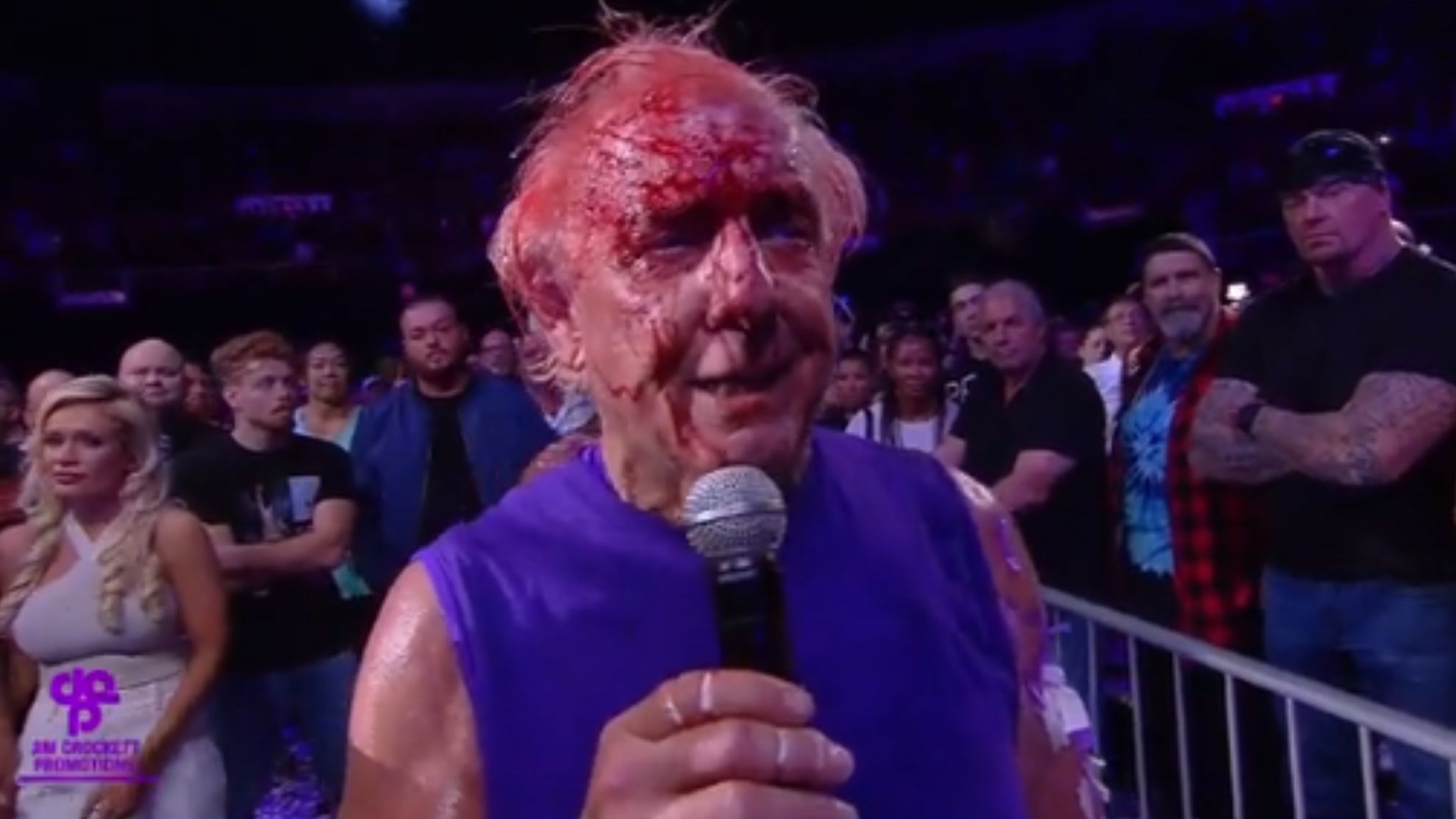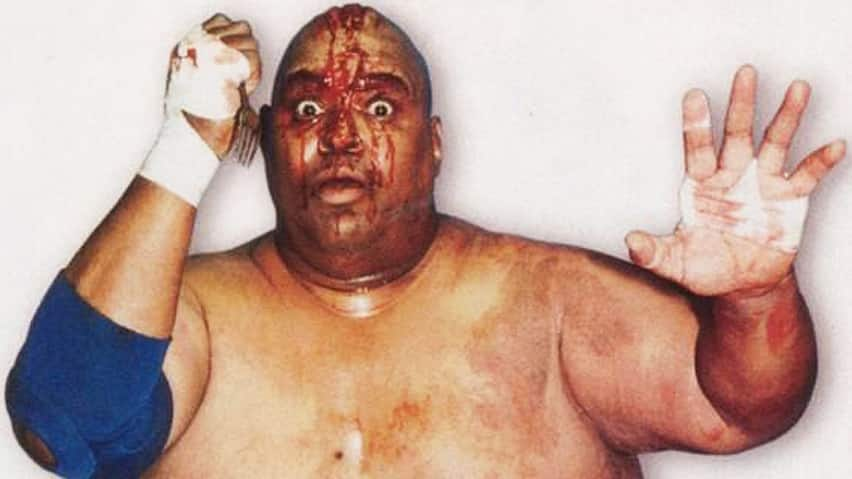Crimson Mask: Does Blading Still Have A Place In Wrestling?
While watching the street fight between the teams of Anna Jay and Tay Melo and Ruby Soho and Willow Nightingale, I found myself feeling a little uncomfortable. I’ve seen wrestlers spill buckets of blood on the canvas for years and continue fighting as if their lives depended on it. I’ve seen Thunder Rosa and Britt Baker rip each other’s skin apart for personal pride and championship glory. I’ve seen a bloodied and battered Shawn Michaels stare defiantly across the ring from his friend and sometimes enemy Triple H in many brutal encounters.
I should know what to expect when it comes to brutality in wrestling, yet I find myself asking a lot of questions like when is it appropriate to use the blading technique and should a person bleed because of natural occurrence or should it be planned? While AEW has shown no problem with having their wrestlers blade, and that I’ve seen many bloody wars in the promotion’s relatively short existence thus far, something about Ruby Soho gushing pints of blood in a street fight on a random episode of Rampage has somehow stuck with me.

Maybe this has to do with not feeling much for the feud between Soho and Tay Melo, or Rampage, for that matter. Whatever the case, this has made me reexamine why blading has stuck around for a long time and whether it should continue to be a thing in mainstream professional wrestling.
Today’s wrestlers have stood on the shoulders of men and women who covered the mat with their blood to keep this industry alive. Dusty Rhodes, Ric Flair, Hulk Hogan, and others were more than willing to shed their skin and wear the appropriately named crimson mask in front of millions watching around the world. As fans, we’ve come to expect this sort of brutality in wrestling, even though it sometimes feels like we’ve also become numb to it.
Despite its prevalence in the industry, blading or “juicing” is something that honestly wouldn’t be easy to explain to someone outside the wrestling bubble. How do you justify using a sharp razor to slice your forehead open during a wrestling match? How would an outsider react to watching Ric Flair covered in crimson and then finding out it was all planned from the get-go to sustain any semblance of heat and interest in a feud? That’s a conversation I would dread to have despite being a fan of this for nearly 20 years.

Yet here we are, decades after a former wrestler named Kirby Watkins, who later became known as Sailor Watkins, built a reputation for himself by digging his sharp fingernails and teeth into his opponent’s skin. As noted in an article from the folks of WrestleTalk, Watkins’ actions eventually led others to adopt a similar stiff working style inside the ring, including a wrestler named ‘Dangerous’ Danny McShain, who pioneered the infamous piledriver finisher move and became known for dropping people on their heads.
Then there’s former Canadian wrestler Abdullah the Butcher, who carried scars across his forehead thanks to how much he bladed throughout his career. WWE Hall of Famer ‘Superstar’ Billy Graham, who once worked a show where Butcher purposely sliced up another wrestler’s face and neck without consent, asked Butcher why he committed such as vicious act, to which he just replied, “I gotta get my heat, baby.” Many past and present wrestlers would probably agree with Butcher regardless of how inhumane it feels.

Manufacturing heat has always been a skill in professional wrestling, and like any skill, it takes a good tool to improve it through time. While an emotional and intense promo exchange between a popular babyface and hated heel could be enough to rack up interest in a feud, we are conditioned by the protected(sometimes not) chair shots to the head, the spear through the barricade wall, the kendo sticks to the body, and a wrestler soaked in their blood. It’s funny to think that during the WWF’s Rock n’ Wrestling Connection during the 80s, Vince McMahon decided to take blading out of the equation and focused on presenting a more family-friendly wrestling show.
Of course, this didn’t last for too long because after other promotions such as WCW and NWA stuck to their guns and utilized the blading tool to their advantage, the WWF shocked the world by having Stone Cold Steve Austin bloodied and screaming while being locked in Bret Hart’s sharpshooter submission at WrestleMania 13. It became an indication that wrestling would always carry this tool in its pocket if there were fans who needed to be invested in a program. No matter the external circumstances, blood would always be a quick way to manufacture heat.
Over the years, some wrestlers have gone out of their way to manufacture heat using the blading technique without the consent of a promoter. One example occurred in 2008 when WWE caused quite a stir and switched from PG-14 to PG. Gone were the days of WWE superstars shedding blood during matches or using profanity on television. Although Vince McMahon himself agreed with WWE’s new philosophy to present a less violent show for the audience watching at home, former World Heavyweight Champion Batista decided to go against the ruling of no bloodshed during a steel cage match against Chris Jericho.
As you would expect, this ended poorly for the Animal. Batista’s decision to blade following a brutal shot to the head with a steel pipe from Jericho led to a $100,000 fine and a tense backstage confrontation with McMahon. While discussing what happened in 2008 on Jericho’s Talk Is Jericho podcast, Batista admitted he was “heartbroken” upon hearing the amount he would have to pay for making that decision. Though the fine himself left the Animal distraught, he still believed he made the right decision, saying blading was “good business” in the end.

In Batista’s mind, blading was a necessary tool in a wrestler’s toolbox, and it became the equivalent of kicking out before the three count or looking into the hard camera while cutting a promo. If you were in a “blood feud, ” you were expected to shed some blood. Fans were so accustomed to seeing someone covered in crimson that they began critiquing matches for the lack of it. Suddenly, the lack of blood became a huge talking point in the industry.
The post Crimson Mask: Does Blading Still Have A Place In Wrestling? appeared first on eWrestlingNews.com.
